Incineration plants, sacrificial pork, and ominous-looking public toilets
Walking Shibuya to Ebisu (4)
To heighten the surreal contrast and add a certain frisson to the already eclectic cityscape, they added an incineration plant just across the tracks and a 15-minute walk from Shibuya’s famous scramble crossing. This is one of 21 facilities located in Tokyo’s 23 central wards. Several are tucked away on the man-made islands steadily cluttering Tokyo Bay, while at least two more – one between Ebisu and Meguro and another one next to Ikebukuro – sit surprisingly close to Yamanote Line stations.
While many incinerators around the world are battleship-gray, a color that is supposed to give them a lower profile, the one in Shibuya is pure white. It can process about 200t/day of waste and is equipped with air pollution control to reduce the concentration of dioxins, heavy metals and particulates. Apparently, Japan's facilities are considered among the safest and cleanest in the world. They produce far below WHO-recommended dioxin levels, are rigorously maintained and upgraded, and use negative air pressure systems to prevent bad smells from escaping.
Still, I wouldn’t want to live near one of those stacks.
I walk on, and just after passing a Vietnamese restaurant glowing with a calming blue that seems to transport me to an exotic place, I stumble upon a quintessential example of Tokyo’s unique urban eclecticism when I round a corner and find myself in what might, by European standards, resemble a small square – a concept virtually alien to Japan. A blood-red building stands boldly beside a pastel-pink condominium. Adding contrast, a charcoal-gray structure looms, as if singed by flame. And at the heart of this curious ensemble: a Shinto shrine, Ebisu Jinja.
After about one hour of perambulations, I finally reach Ebisu, the next station on the loop. It seems that every other Tokyo district has a shopping street called Ginza, and Ebisu is no exception. This being a rather refined neighborhood, I find aptly named apartment buildings such as one called Pearl Manshon, where manshon means condominium.
The Japanese love to borrow foreign words and twist their meaning in the process. Manshon is the product of such a creative approach. First used in the early 1950s, it was coopted by developers who built high-end apartment complexes in order to set them apart from cheap condos, called apaato (from the English apartment) and public housing. Since they were targeting posh people with money, the developers thought that a mansion better expressed the image of luxury and opulence they were trying to convey.
Today living in a manshon does not necessarily mean you are either posh or well-off. It’s more a technical term to distinguish rather large-scale (three or more stories), solid-built, steel-framed reinforced concrete constructions from small-scale wooden or lightweight steel-framed condos.
Almost midway through Ebisu Ginza I find a café surrounded by luscious potted plants and I dive in to rest my aching feet. Chandeliers, a mirror ball, red velvet sofas, and retro-future sample cases. Connoisseurs would brand them as vintage and hurry to say something like the retro-style interiors create a timeless setting that transports visitors to a bygone era. To me, it just looks plain old, and I mean it as a compliment.
I later learn from the two ladies – mother and daughter – who run the place that the joint was first opened in 1962, which makes sense, and the owners have not bothered to change the place since. Judging by the smell, I would say smoking is still allowed – or maybe it’s just the ghosts of cigarettes past lingering in the walls.
We are firmly in Showa-era territory. The fabulous ‘60s, a time of unlimited hope and glory. No wonder it is regularly used for filming videos and movies such as Norwegian Wood and Shinjuku Swan.
I plop myself on one of the sofas and take in the scene while sipping banana milk. The deep red upholstery and carpet, combined with the smoked glass windows and subdued lighting, lend the place an air of faded glamour and quiet sleaze, even in the middle of a lazy afternoon. The music drifting from the speakers isn’t standard classical fare but stylish pop, including Japan’s own City Pop. Rather incongruously, there’s a DJ booth – currently unmanned, as if waiting for a night that may never come.
I need to pee, but instead of using the café’s restroom, I walk to a public toilet. Ebisu is, among other things, at the avant-garde in this particular category, being one of the locations of the Tokyo Toilet Project – 17 public toilets created by famous architects and designers like Kuma Kengo and Pritzker Prize winners such as Ando Tadao, Ban Shigeru, Ito Toyo, and Maki Fumihiko. It should actually be called the Shibuya Toilet Project because all those fine-looking latrines are located in Shibuya Ward, and three of them are very close to Ebisu Station.
Granted, these 17 designer loos are just a drop in the ocean of Tokyo public toilets. Shibuya Ward alone has 186 standalone (street/park) facilities or about 12.3 per km². The 23 central wards average around eight per km² (for comparison, Paris has 6.7/km²). Also, Tokyo has approximately 53 standalone public toilets per 100,000 residents, compared to London’s 14/100k.
Since Wim Wenders released Perfect Days in 2023, people outside Japan seem to think that all Tokyo’s public restrooms are squeaky-clean works of art. They don’t know the horrible truth. Indeed, The Tokyo Toilet Project was launched with the explicit goal of changing the negative public image of public restrooms in Japan – those you normally find in public parks – which are often associated by the locals to the infamous “four Ks”: kitanai (dirty), kusai (smelly), kurai (dark), and kowai (scary).
Speaking of kowai, I decide to pay a visit to the strangest of the three Ebisu toilets. Nestled against the slightly elevated Yamanote Line tracks, this sinister-looking structure was painted completely red and reminds me of the infamous Red Room from Twin Peaks. Then again, I’ve been told my twisted mind works in mysterious ways, so don’t take my word as gospel.
Before heading south to my next stop, I take a detour east of Ebisu Station. A beautiful mural has been painted under the railway bridge. It's dedicated to Ebisu, one of the Seven Days of Luck, but one side features four pigs. One of them asks, “Kyo nani taberu?” (What are you going to eat today), which feels a bit unsettling, especially considering that this adorable piglet is likely to end up on someone’s plate sooner or later.
A youngish politician named Ono stands on a busy corner of Meiji-dori, the seemingly endless avenue that winds through western Tokyo for more than 33 kilometers. Grasping a microphone in one hand and a banner bearing his name in the other, he delivers his speech to a largely indifferent audience. His voice is barely audible, swallowed by the roar of passing traffic. Even sadder is the woman in a fluorescent green jacket, tirelessly waving non-stop at no one in particular, trying to attract the passersby’s attention or at least muster a little sympathy for her boss. It’s a holiday, and the sidewalk, usually packed, is almost eerily empty.
I like him, At the very least, Ono-san deserves credit for keeping his noise levels to a minimum. Not like those candidates who choose Sunday mornings to drive around sleepy neighborhoods in their campaign minivans, methodically covering their electoral turf, block after block, blasting their “message” (Vote for me! Vote for me!) at full volume. If they don’t get elected it’s probably because of the curses hurled at them by bleary-eyed residents.
Stylish toilets and sacrificial pork aside, the main reason for crossing to the right side of the Yamanote is to check on and commiserate the fate of the Shibuya River, where the word “river” is a rather pompous name for an otherwise humble, narrow, shallow stream. Its source is said to be inside Shinjuku Gyoen, the beautiful park south of Shinjuku Station. It changes names more than once, eventually flowing along Shiba Park and into Tokyo Bay near the Kyu-Shiba Rikyu Garden.
Back in the day, the Shibuya upstream was lined with landings and riverbanks, and boat traffic buzzed along the water. In the early Meiji era, the river was clean enough to support a rich ecosystem. Fireflies lit up the riverbanks on summer nights – so plentiful, in fact, that some were reportedly collected as a gift for the Tokugawa shogun. Ayu (sweetfish) swam in the shallows, and the edges of the river were lush with reeds and cattails, more like a countryside stream than something you'd expect in the middle of what is now one of Tokyo’s busiest districts.
But by the early 20th century, urbanization had taken its toll. Water quality declined, and the river’s volume began to shrink. The first blow came when part of the riverbed was culverted to make way for a department store. After the Pacific War, the Shibuya became a dumping ground for domestic and industrial wastewater, gradually turning into an open sewer. Then the Metropolitan Expressway completed before the 1964 Tokyo Olympics was built directly over the downstream section. By 1970, with nearly all its tributaries covered over and repurposed as sewer trunk lines, the river had lost most of its sources and was reduced to a dry channel except during heavy rains. Digging into Tokyo’s drainage and sewer systems would likely uncover an upside-down history of the city.
In 1995, the Tokyo Metropolitan Government implemented a clean river restoration project channeling reclaimed water that has undergone advanced treatment at the Ochiai Water Reclamation Centre in Shinjuku. But the fact remains that the Shibuya does no longer look like a river, or even a stream. It's a canal, a dirty ditch between rat-grey banks.
This is the fate shared by countless rivers – not only in Tokyo, but throughout Japan – straitjacketed in concrete or just “disappeared.” In fact, most of the Shibuya is now a culvert, resurfacing only south of Shibuya Station. Harajuku shoppers and the thousands of people who pass through Shibuya Crossing have no idea that they’re, quite literally, walking on water.
Dear readers, thank you very much to all the people who have recently opted for a paid subscription.
If you like what I do and would like to support Tokyo Calling, don’t forget the special 80% discount on annual paid subscriptions.
$30 → $6 (see link above)
Here’s a chance to support Tokyo Calling for cheap!





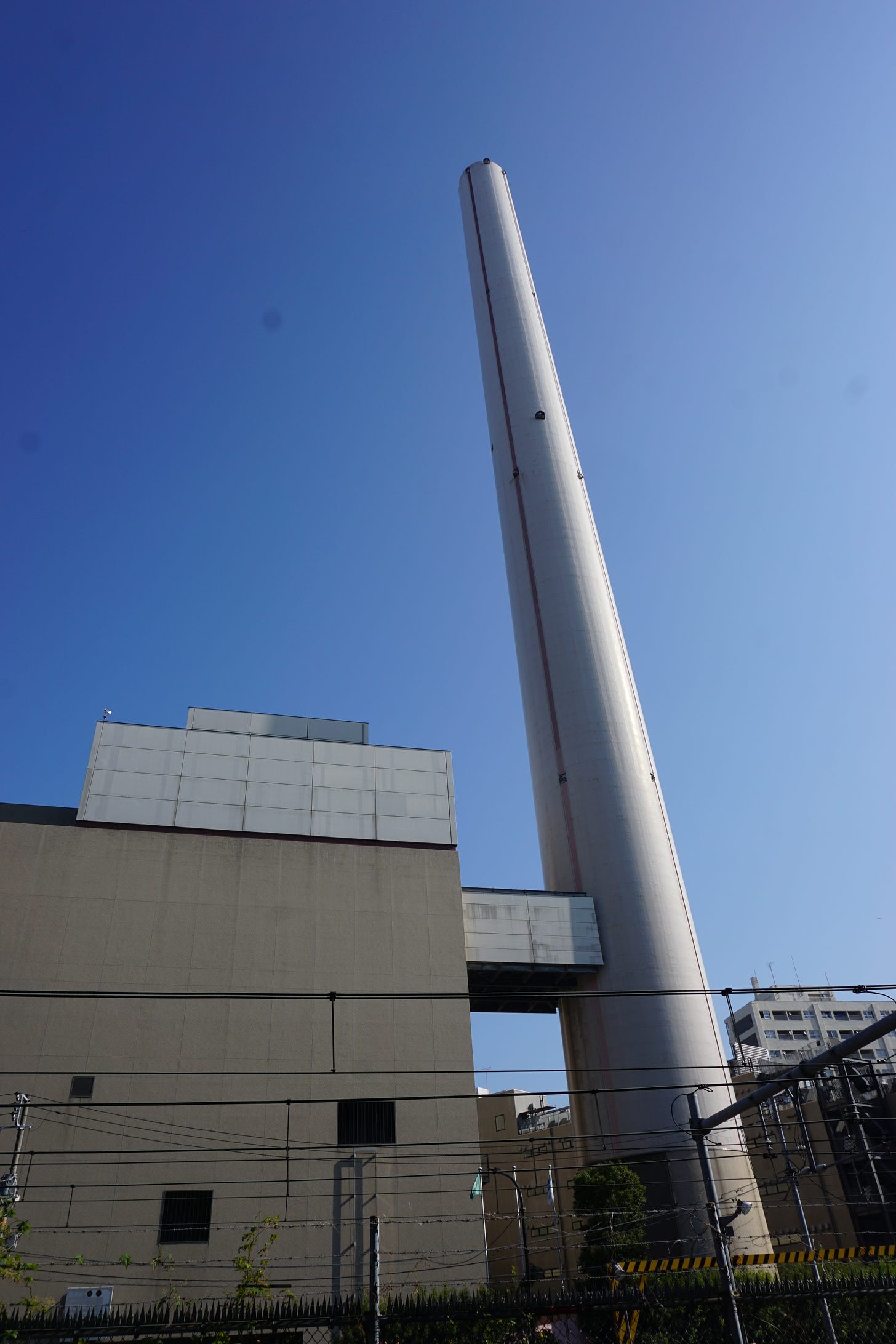

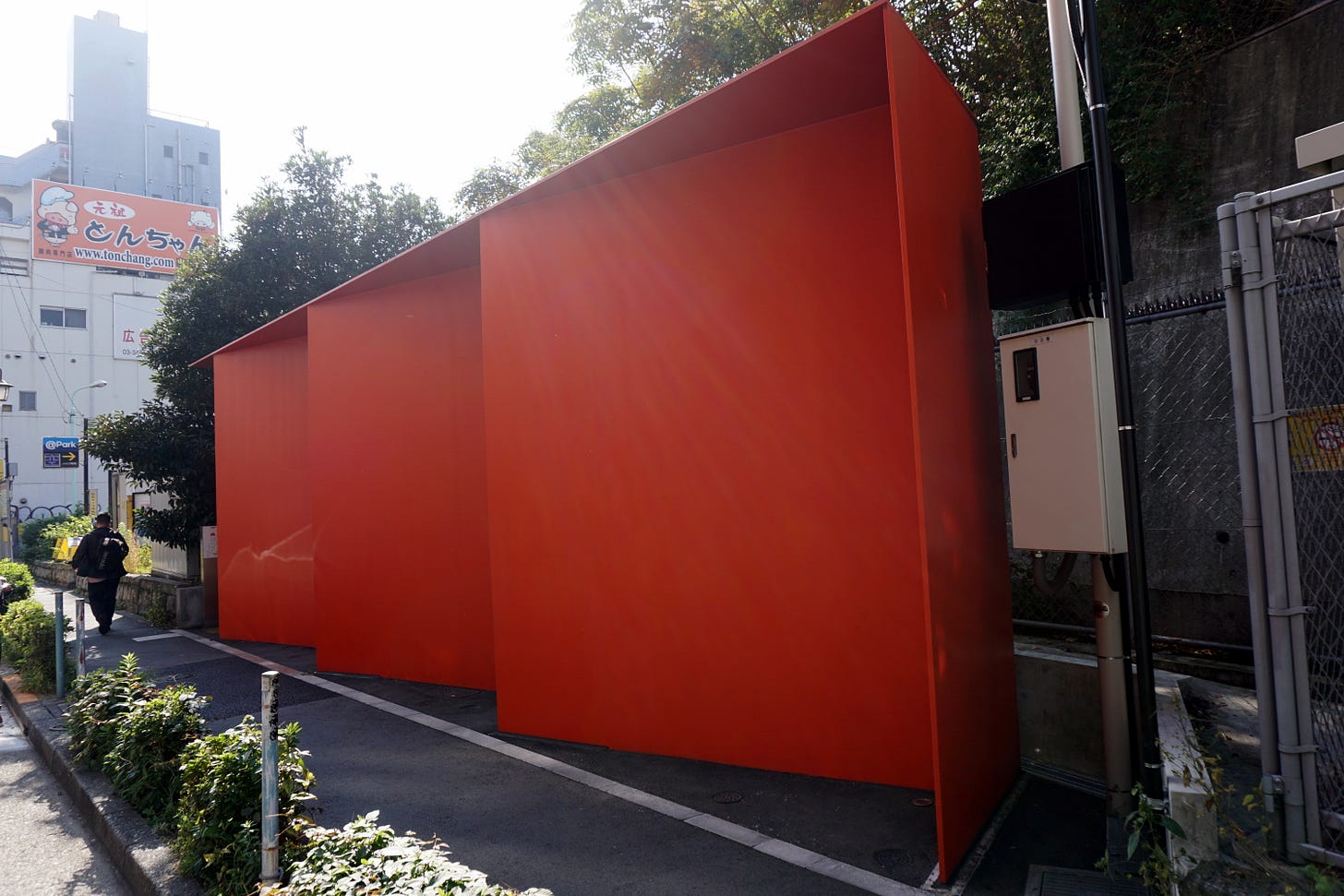
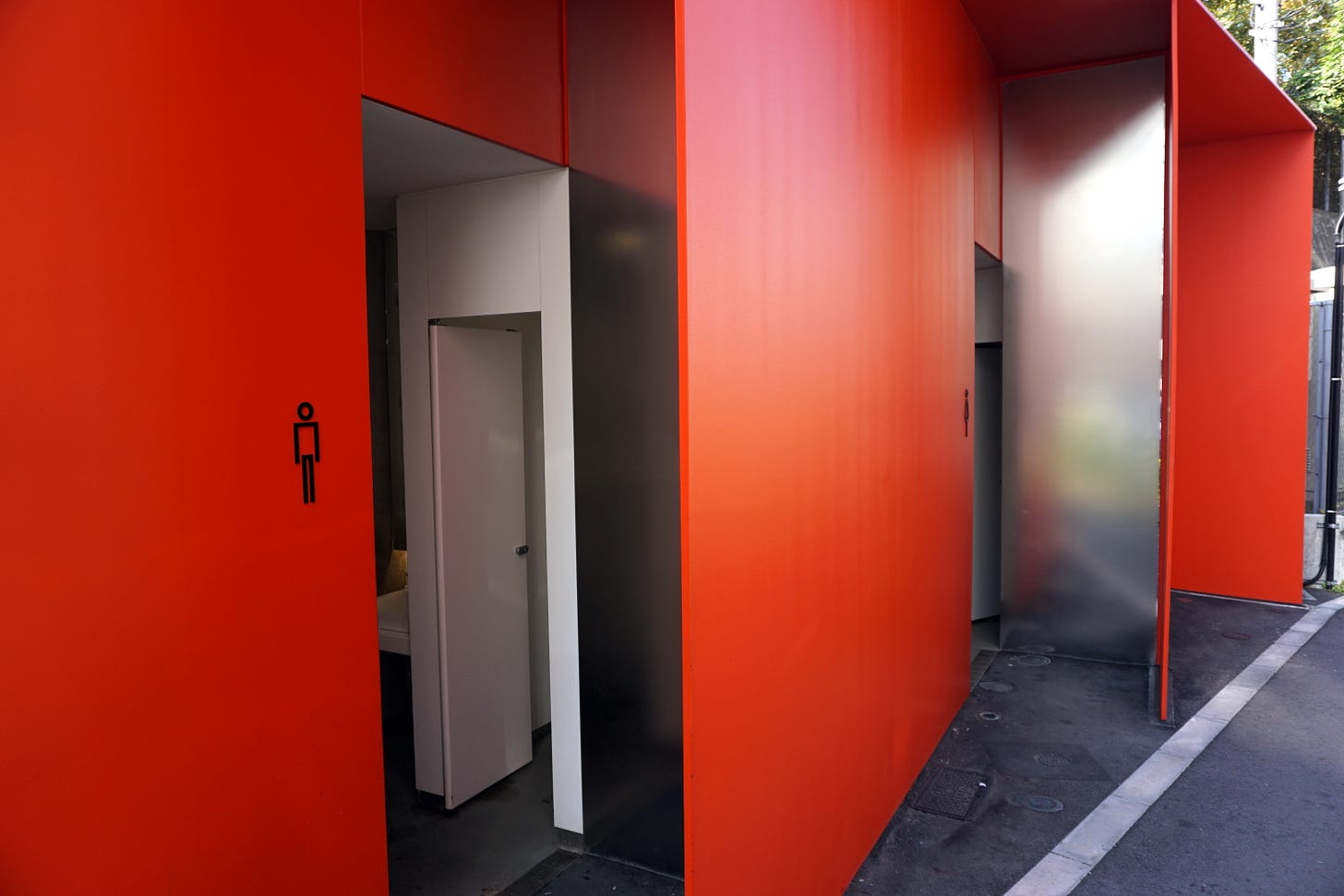
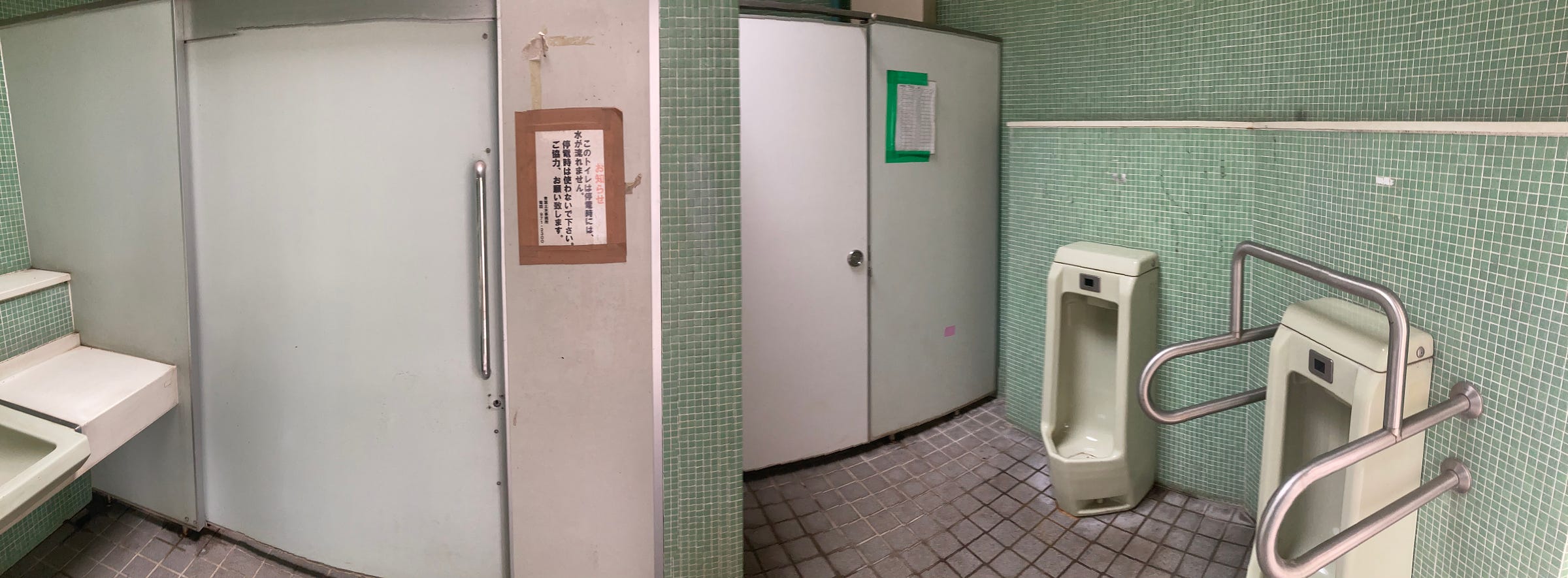

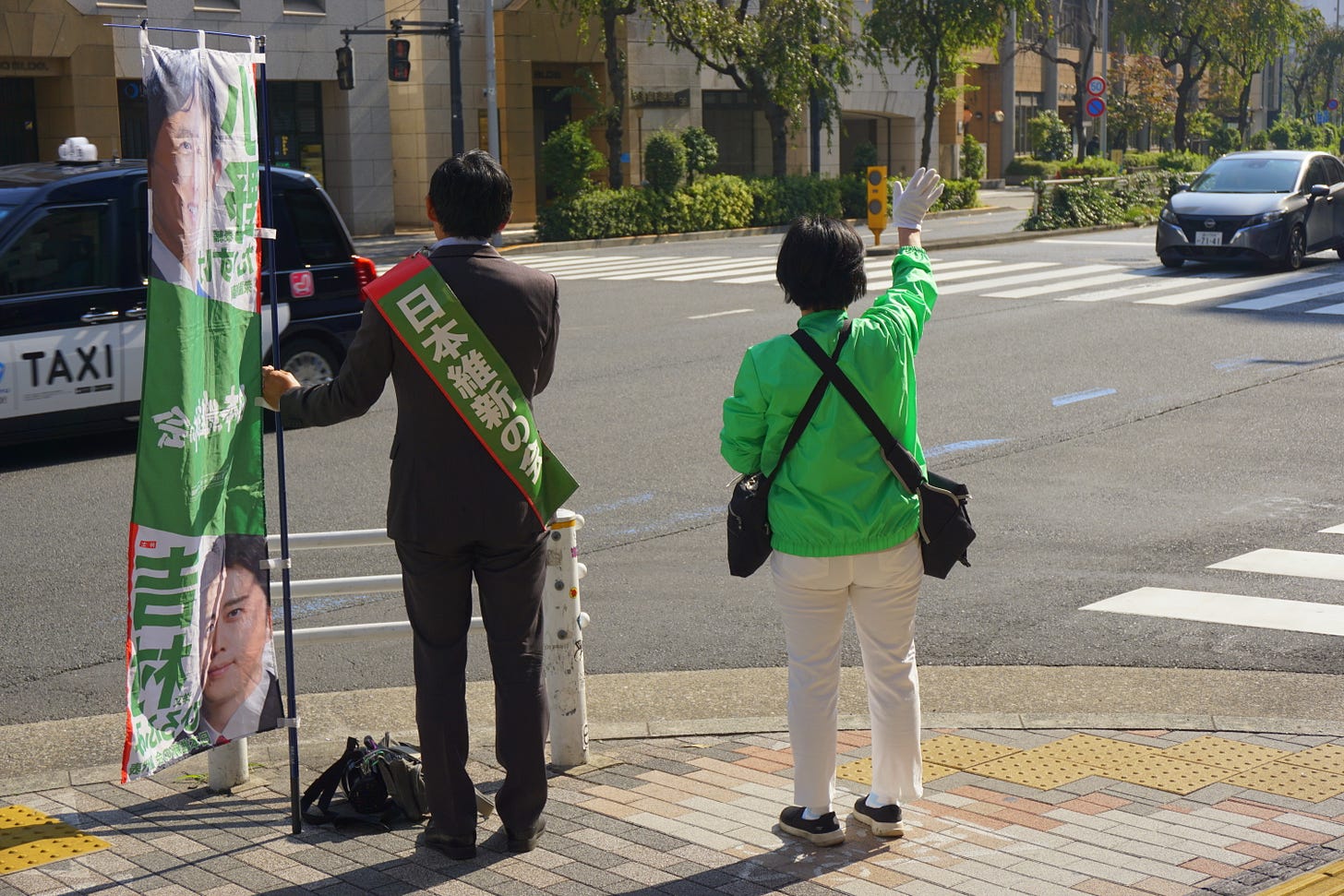


Hi Gianni.
Wheww ... you are a better man, or more fit, than I am to walk in this heat.
Good, deep dive into the history of the area (much of this new to me) and a breakdown of the origins of 'manshon'. I've often wondered what they would call a real mansion (not DisneyLand's 'Haunted Mansion') such as Vanderbilt or Biltmore? Maybe the same, but with the correct spelling in romaji?
Glad you mentioned 'Perfect Days' ... a VERY good movie. And yesterday, I tried to beat the heat with yet another gorgeous movie ... Kokuho, (National Treasure). https://kokuhou-movie.com/. Even though I went on a Friday afternoon, the theater was packed, weekends even more so. Recommended, because like Perfect Days, the movie can be appreciated without being fluent in Japanese.
But to be fair and show a darker side (the 'komorebi' of 'Perfect Days'?), those '4ks' appear to be a whitewashing of an earlier 5 k's that were once used to describe work that typical working class Japanese were loathe to do ...
• Kitanai(汚い) – Dirty ... handling waste, grime, or unhygienic environments ... e.g., sanitation work, factory floors
• Kiken(危険) – Dangerous ... risk of injury, exposure to harmful substances, or unsafe machinery ... e.g., construction, nuclear decontamination
• Kitsui(きつい / 苦しい) – Tough / Physically demanding ... hard labor, long hours, or physically exhausting tasks
• Kibishii(厳しい) – Strict / Harsh ... rigid rules, tight supervision, or unforgiving environments
• Kurai(暗い) – Gloomy / Poorly lit / Spiritually depressing ... emotionally taxing or isolating work environments
An extreme example being the Fukushima cleanup which included migrants and asylum seekers, Vietnamese 'technical trainees' (who finally won a court settlement in 2020), overseas workers under specific visa schemes, and transient contractual laborers ("nuclear gypsies"). These groups frequently faced serious issues such as a lack of safety training, low pay, and exploitative working conditions.
Sad to end on such a downer, so when it cools off a bit, let's hit that jazz kissa.
Cheers.
I like this type of “oldish”
cafes. Need to visit next time I’m in “town”. And for toilets , Tokyo is definitely one of the world leaders if we look for easy availability. Can’t tell the same about HK or Korea, for example.